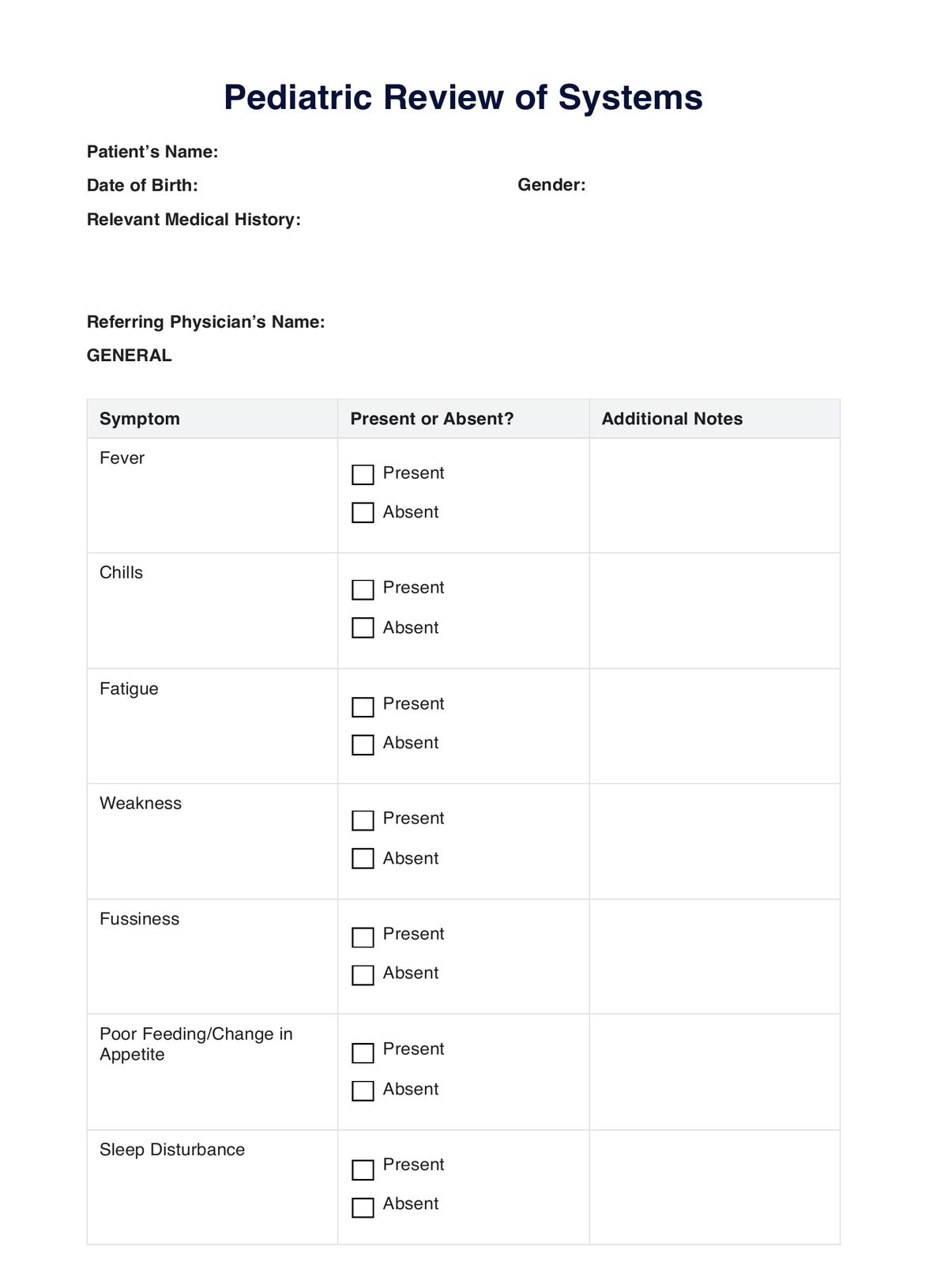You can create a template by opening a document on any software you have. However, for ease of creation and access, you can opt to create one from scratch using the note feature on Carepatron or, instead, customize the template provided in this guide.

Pediatric Review Of Systems
Better assess your young patient’s health using a pediatric review of systems template. Click here for more information and a free template copy.
Use Template
Pediatric Review Of Systems Template
Commonly asked questions
Pediatric review of systems templates are typically used during consultations when the referring physician assesses and evaluates the patient’s condition.
The pediatric review of systems templates are used as an educational resource for medical studies or a guide and document to record observations and findings.
EHR and practice management software
Get started for free
*No credit card required
Free
$0/usd
Unlimited clients
Telehealth
1GB of storage
Client portal text
Automated billing and online payments











